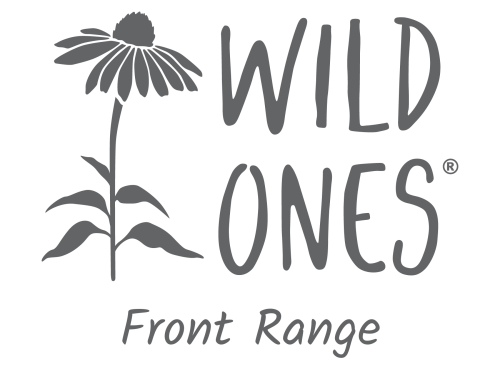By Deborah Lebow Aal, with help from Robert Greer, Jan Midgley and Jonathan Sciarcon
This is a revised version of our most popular toolkit entry.
Gardening in the shade with native plants requires quite a bit of creativity on the Front Range of Colorado. We did not have many native trees here on the plains, so there are not many native plants adapted to growing in shade. But, with the artificial shade we have created with the built environment, and the trees we have planted, we need to find native plants that will tolerate some shade. We may need to look to the mountains or the eastern/central great plains for regional, shade-tolerant native plants., as you’ll see in the list below.
And, why native plants? If you’re reading this, I am guessing you know how important they are to the ecosystem, but if not, the best explanation is described here.
Considerations Before Selecting Plants
Partial shade and full shade are very different. Partial shade will allow more native species to do well. In fact, with our intense Colorado sun, many plant species with labels indicating they need full sun may do just fine in partial shade. Full shade will be more difficult. A really densely shaded area will probably support little, and what it does support will be mostly foliage. Four or more hours of direct or indirect sun a day will allow a much bigger palette of plants. So, assess the amount of shade under your tree or near your house before planting any of these recommended plants. A good rule of thumb is that plants with broad leaves will do well in the shade here, though there are of course exceptions.
In addition to the shade it casts, we do need to remember that a large portion of a tree’s biomass is underground. We need to be cognizant of the density of the root structure to know what can happily grow under a tree canopy. If plants are competing with a dense root structure, they will have a more difficult time. And, you may have to water more, as plants under a tree canopy get less rain water or snow than those out in the open. Obviously, not much will survive with no water.
One or two more considerations. If your shade is facing north, the plants that will survive are different than if facing south. The temperature difference can be substantial, so assess that as well before planting. And, consider the edge, or transition zone, from shade to sun, differently than the area completely under a tree. You will have to experiment with these plants, so our suggestion is start with just a few and assess how they do. And, as with all plantings, there are no guarantees, but here are a few suggestions.
Shrubs/Small trees
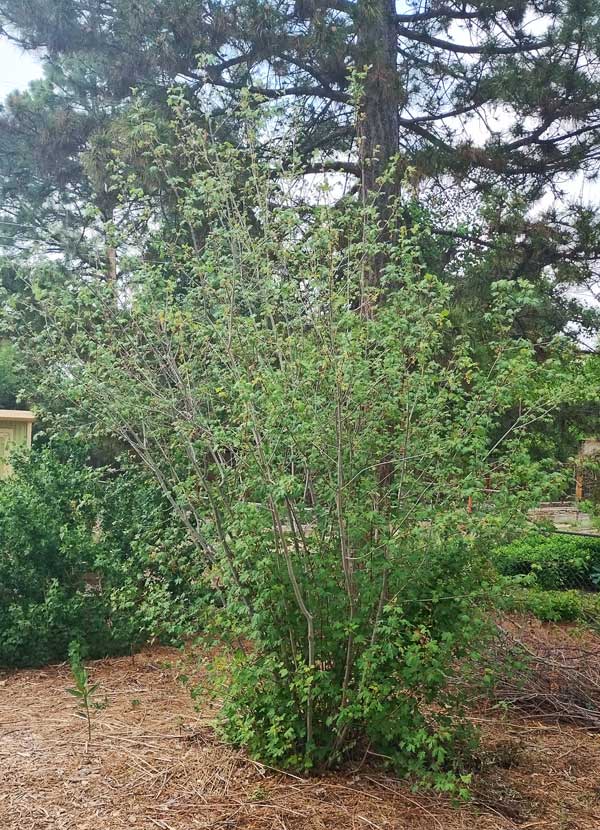
Acer glabrum (Rocky mountain maple): This “tree” needs sun but will tolerate shade, and will be more like a shrub in shade.
Acer negundo (Boxelder maple). A shrub-like, fast-growing, tree, with small yellow-green flowers in early spring. This shrub likes a bit of water, so not appropriate for a non-irrigated landscape. It likes a bit of sun, but can grow as an understory plant.
Amelanchier alnifolia (Saskatoon serviceberry): Likely to be a small-to-medium shrub when grown in substantial shade. Cream flowers in April and tasty purple berries in June. It has attractive burgundy-colored winter bark.
Berberis aquifolium (formerly Mahonia aquifolium, upright Oregon grape): Not native to CO, but a very close relative of Mahonia repens with basically identical characteristics, just in a shrubbier form.
Philadelphus microphyllus (Littleleaf mock orange): The Ladybird Johnson Center says it likes full sun, but Kenton Seth (local native plant landscaper extraordinaire) has used it in shade and, as mentioned above, many species that like sun elsewhere are happy to get some shade from our intense Colorado sun.
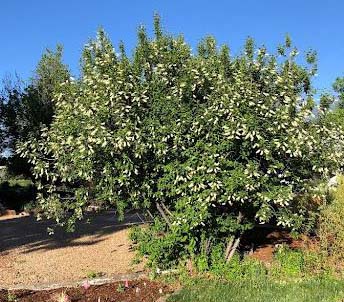
Prunus virginiana (Chokecherry): This is a large bush or small understory tree, with white flowers in the spring followed by red berries. Chokecherry can grow in sun, partial shade or pretty dense shade. It does sucker, so plant where you want a thicket.
Perennials (Forbs)
Amorpha canescens (leadplant): This one could probably use more sun than others on this list, but Prairie Moon nursery says it can tolerate partial shade, and that’s probably especially true in Colorado. Purplish flowers highly attractive to native bees, often used as a Russian sage substitute (So, so, so much better than Russian sage, which is not a native, for the ecosystem!). Added bonus – this plant fixes nitrogen.

Aquilegia caerulea (Colorado Blue Columbine): Columbine, like many plants from higher elevations, can be more successful on the Front Range if grown in partial or even full shade. Supplemental water will be needed.
Arctostaphylos uva-ursi (manzanita, kinnickinnick, bearberry): This will happily fruit in the understory of a pretty dense pine canopy. Manzanita is Spanish for “little apple,” which these Rosaceae fruits indeed closely resemble, though they are only marginally edible. A thick, evergreen ground cover with petite bell-shaped light-pink flowers in early spring. Although it will grow in shade, it may not flower there.
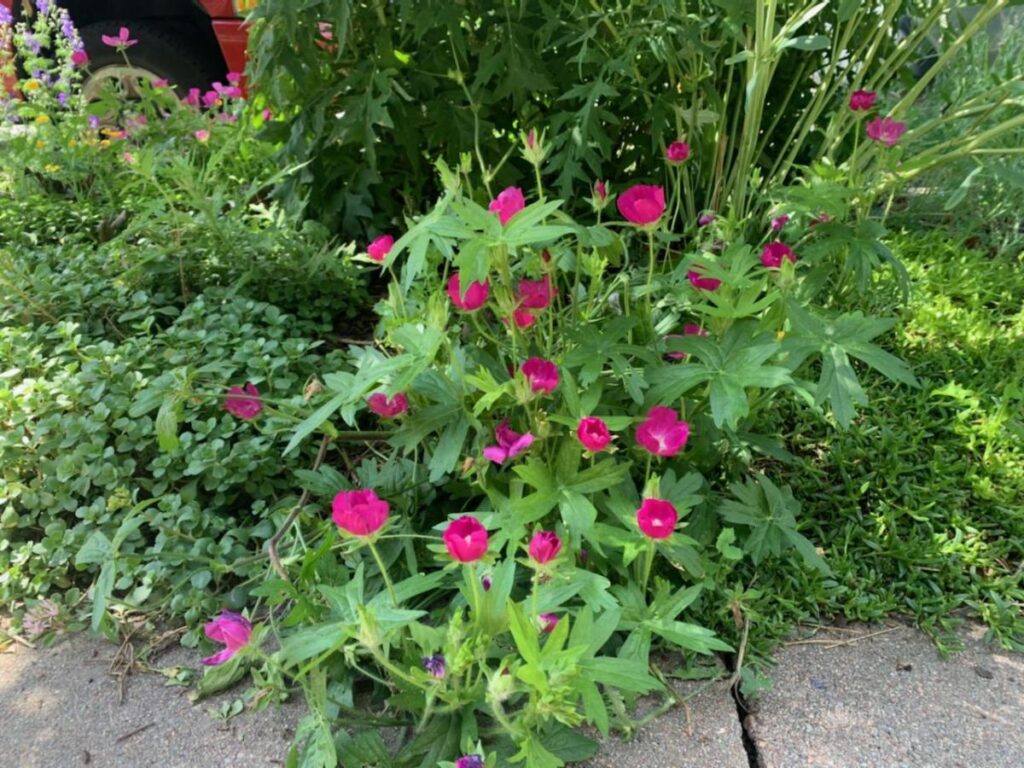
Callirhoe involucrata (Prairie winecups): This plant has magenta flowers on the hottest summer days and does very well in sun and is quite xeric, but if you plant them on the edge of a tree canopy, in dappled sunlight, they will do just fine. They may not have as many blooms as in full sun, but often look happier and stay green longer in partial shade.
Campanulastrum Americanum (American bellflower): A biennial with lavender blue flowers that tolerates shade and is great for native bumblebees. Technically not native to Colorado, but considered a regional native.
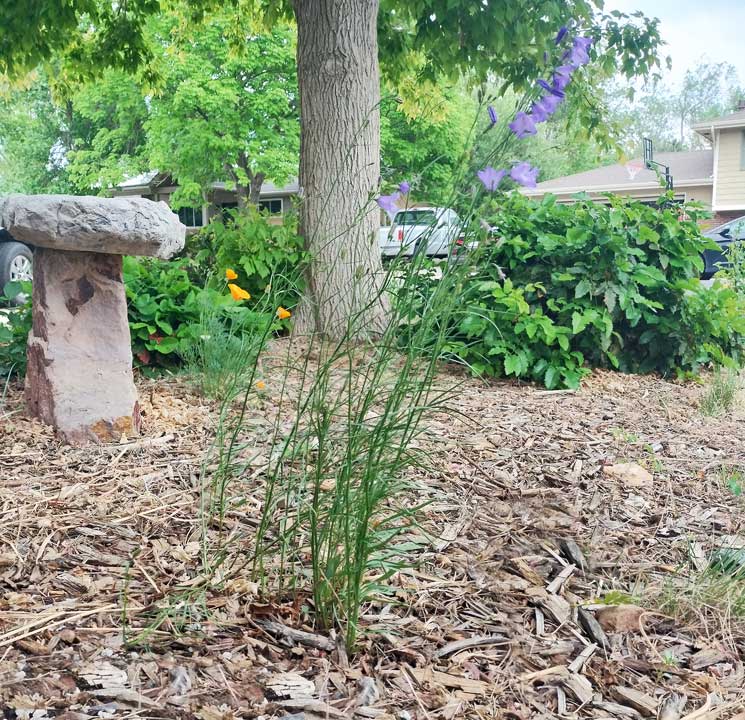
Campanula rotundifolia (Bluebell bellflower, harebells): This very common wildflower will pretty much grow anywhere if it gets about 6 hours of sun. The little blue flower is lovely. Rabbits do enjoy it, though, so if you have rabbits you might consider protecting (or skipping) it.
Delphinium ramosum (Mountain Larkspur): This gorgeous flower can take over (i.e., be a garden thug) where it gets full sun. Much better in partial shade, where it is better behaved.
Echinocereus triglochidiatus (Claret Cup Cactus): Really! Can form sizable clumps in dry shade and can tolerate morning shade with afternoon sun.
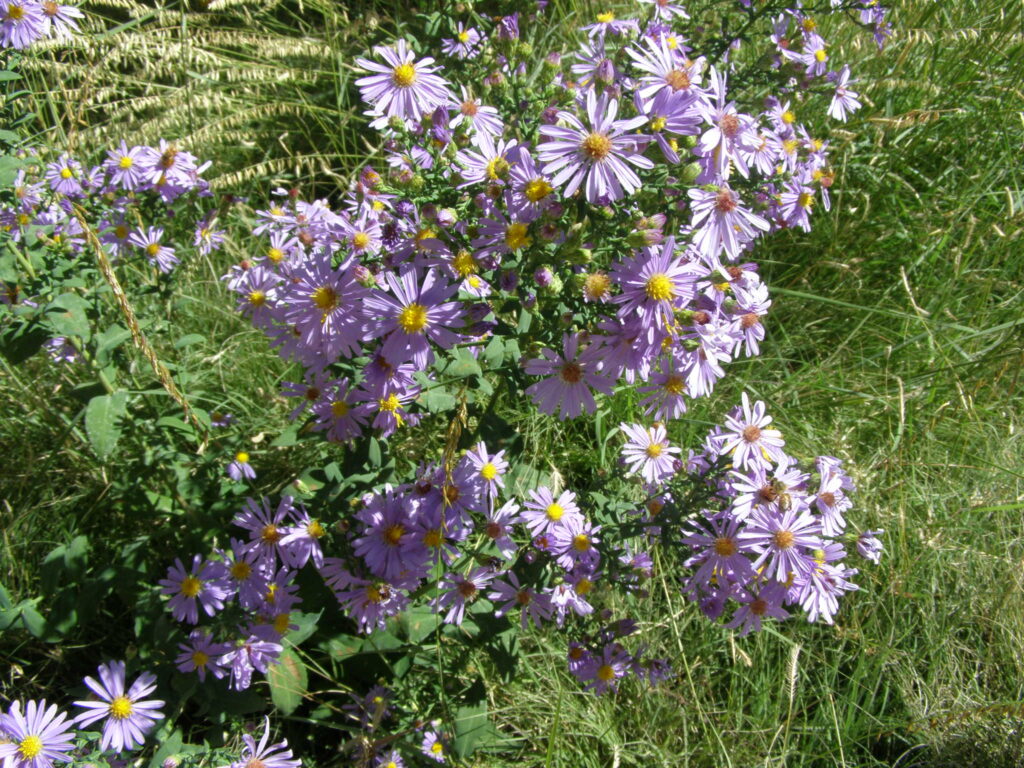
Erigeron speciosus (Aspen fleabane): This plant may prefer sun elsewhere but does best with some shade in Colorado.
Fragaria virginiana (Wild Strawberry): While everything you read says strawberries need sun, strawberries often do better with partial shade with our intense Colorado sun, especially if planted in a south or west facing area. These produce tiny but very sweet strawberries, and are a nice ground cover in partial shade. If the shade is too deep, they will not fruit, but still provide a nice ground cover.
Geranium viscosissimum (sticky geranium): A lovely native geranium that has pink to purple flowers and tolerates part to full shade.
Holodiscus dumosus (Bush or Rock Spirea): In the rose family, this plant looks nothing like a rose, but has tiny white to pink flowers, and can grow to six feet wide. When you look this plant up, it actually says to plant in partial shade! If the shade is too deep, the shrub can get a bit “stretched.”
Juniperus communis (Common Juniper): We know, many people don’t like junipers, but they are important plants for the Colorado ecosystem, hosting many caterpillar species. They come in so many shapes and sizes, almost anyone can find one to appreciate–we’ve moved beyond Pfitzers!
Generally, the ground cover varieties of juniper tolerate shade better. They will have a different growth – more of an open growth in shade, and will do better with some morning sun. Hiking in Colorado, one sees many varieties of juniper growing well in partial shade. They prefer dry conditions, which is another good reason to try them in partial shade. This is NOT a good plant to plant near your house in fire-prone areas. As with many resinous plants, it is quick to catch on fire.
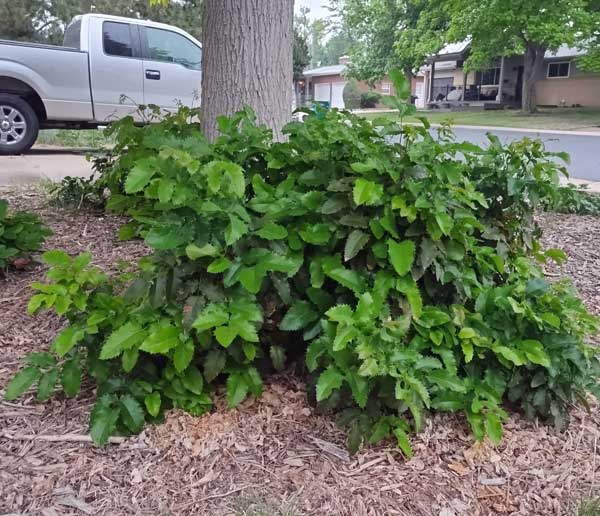
Mahonia repens (creeping Oregon grape): This plant is one of the best shade-tolerant native plants around. You know it – it’s everywhere! It is an evergreen groundcover that turns a lovely maroon or purple in cold weather. The color is richer with at least some winter sun. It has lovely small bunches of yellow flowers in early spring; and berries in the fall. The berries are slightly astringent but reportedly make good jam. Mahonia grows reliably even in dry and quite shady conditions. This plant does well anywhere – full sun, partial shade, deep shade, and tolerates quite dry conditions. And, with its three-season interest, is a favorite of mine, even though years ago it was overused in the landscape trade. The reasons it was over used are good ones – it’s very easy to grow, not fussy at all, and lovely!
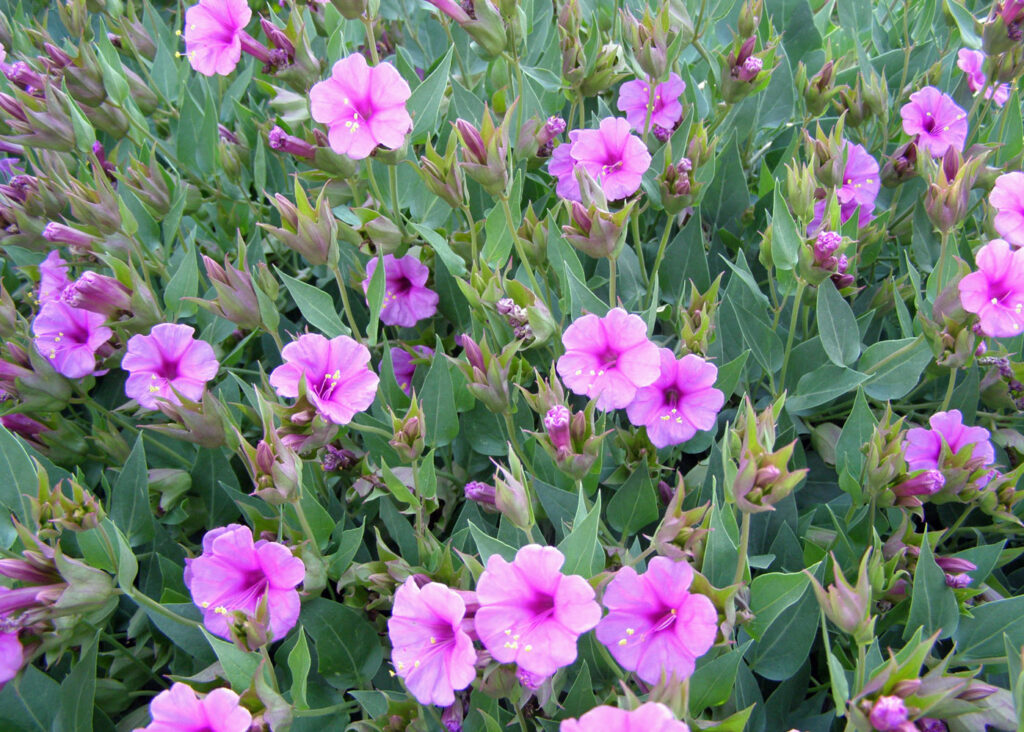
Mirabilis multiflora (Colorado four o’clock): Heart-shaped leaves leap from a taproot every spring. Attractive pink/purple flowers bloom late afternoon until dawn from early June often through September. Extremely attractive plant to sphinx moths and hummingbirds (and humans!). Handles part shade but flowers better in full sun.
Monarda fistulosa (bee balm): This is a broadleaf forb that grows similarly to mint, with tubular purple flowers beloved by hummingbirds and, true to name, hymenoptera. It smells divine. Try to maximize air circulation to minimize powdery mildew.
Nolina microcarpa (Beargrass): A grass-like succulent (but not a grass!). It blooms in early summer with tall spikes of tiny white flowers. Quite drought tolerant, it is evergreen, can get to 6 feet tall though in landscapes usually 3 feet or so high and wide. Nurseries typically say it needs full sun, but it is one of the few plants that does equally well in dry shade–Nolina are adapted to growing up in the shade of “nurse shrubs” in their native desert range.
Oreocarya virgata (Miner’s Candle): This spikey plant needs 6 hours of sun, but can do well in dappled or light shade.
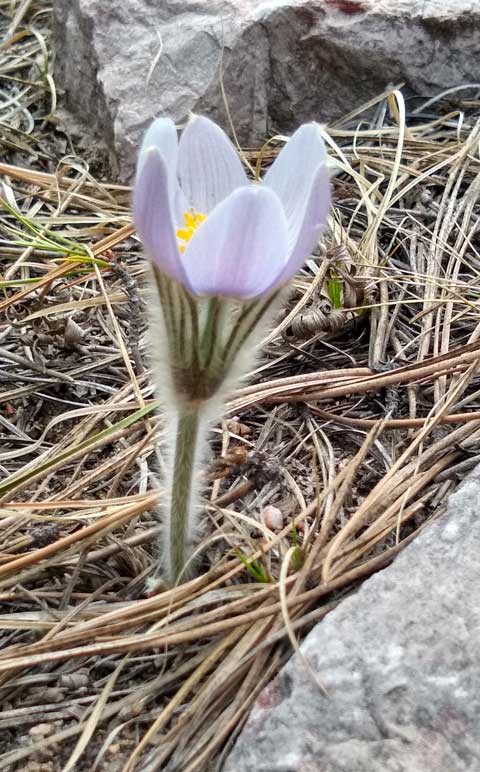
Pulsatilla patens: (Pasqueflower): An early spring bloomer, this does well under deciduous trees that leaf out late, as it flowers in very early spring. A good candidate for edge planting too.
Rhus glabra (smooth sumac); Rhus trilobata (skunkbush sumac): These plants tolerate partial shade and create a fair bit of it themselves with their broad leaves. Attractive tropical-looking foliage (related to mangoes and cashews) that turns a stunning uniform bright red color in fall.
Rhus trilobata has glossy, long-lasting, quasi-succulent, three-lobed leaves. The bloom appears on new growth so you can prune them hard at the end of the winter (not too late or you’ll cut off the new bloom buds).
Rudbeckia Laciniata (Cutleaf coneflower): This plant likes moist areas. It has large yellow daisy-like flowers and can grow very tall in the right conditions.
Scrophularia marilandica (Late figwort): Figworts are one of the best nectar sources for attracting native butterflies, bees, and other insects. This plant has large leaves on sturdy stalks, with reddish-brown small flowers. So, not showy, but a very good nectar plant. This plant is native as far west as Nebraska.
And a few Grasses…
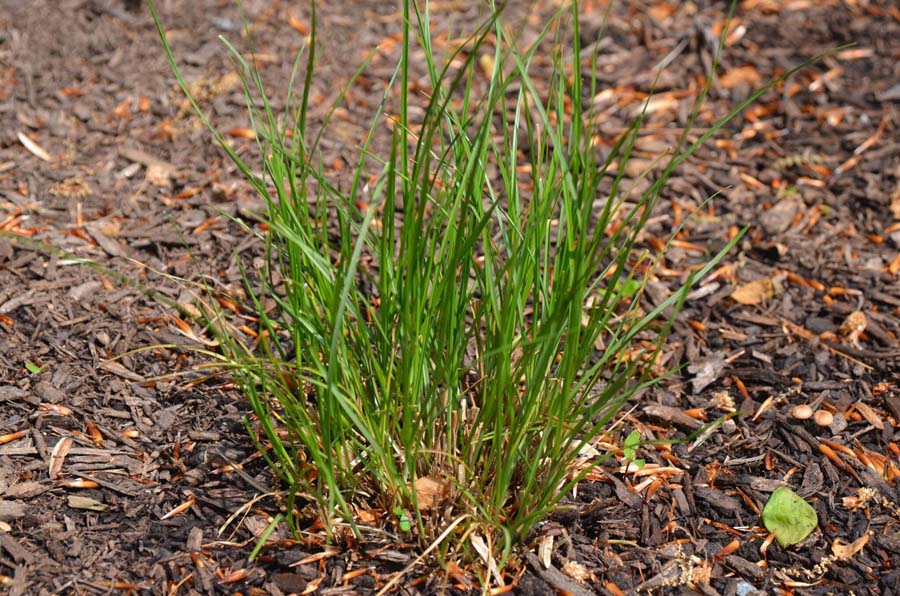
Carex Brevior (Shortbeak or plains oval sedge): Well, not a grass, but a sedge. This short (hence the name) sedge forms dense tufts in mounds, and can manage with less water than most sedges. In its fruiting stage, it has attractive spikes that turn golden brown in the fall. It is also resistant to deer and rabbits.
Elymus canadensis (Canada Wild Rye): This grass is a medium-size clumping grass with gracefully bending inflorescences.
Elymus elymoides (Squirreltail, also a wild rye): This grass grows to about 20 inches in height and can spread over time. The foliage will look a healthier green where it’s getting only 5-6 hours of sun, rather than full sun. This is a cool season grass.
Elymus glaucus (Blue Wildrye): This grass tolerates almost full shade. Everything you read about this lovely grass says it needs full sun, but it does quite well in shade here in Colorado.
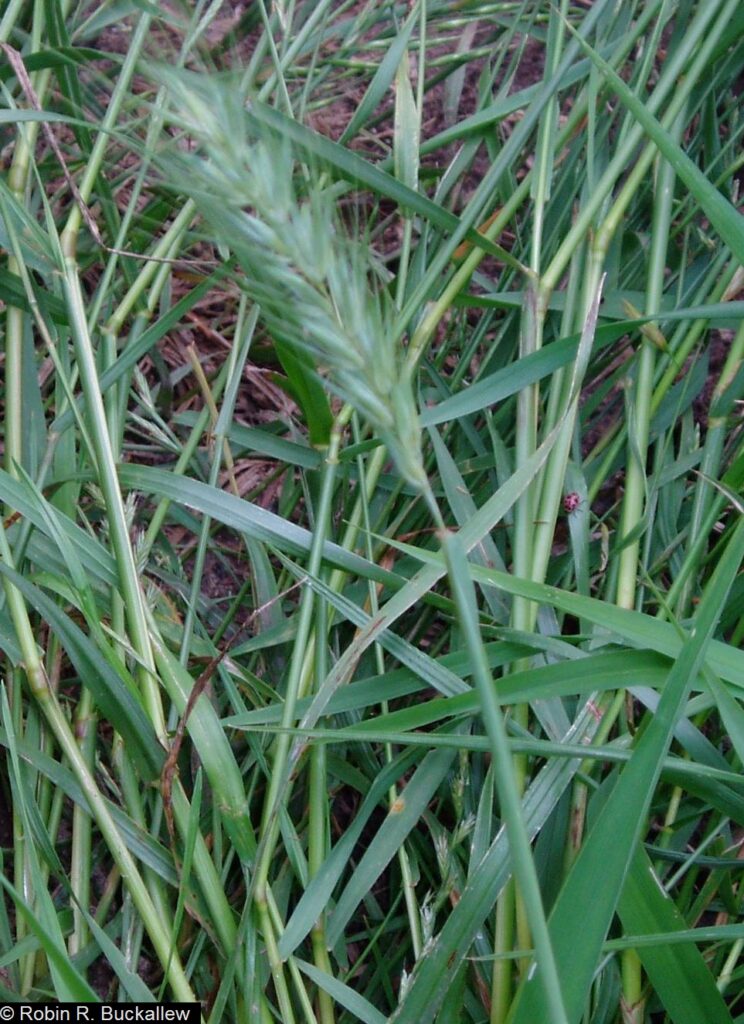
Elymus virginicus (Virginia wildrye): A perennial bunchgrass, it can tolerate many different growing conditions, but particularly likes shaded banks. It is deer resistant and great for steep hillside erosion control.
Festuca saximontana (Rocky Mountain Fescue): This is a short clumping grass with narrow leaves that probably needs 4-6 hours of daily sun.
Muhlenbergia racemose (Green or Marsh muhly): This is a warm season rhizomatous perennial grass that will grow in full shade It will grow in moist or dry conditions, and has a light green color, unlike other grasses.
